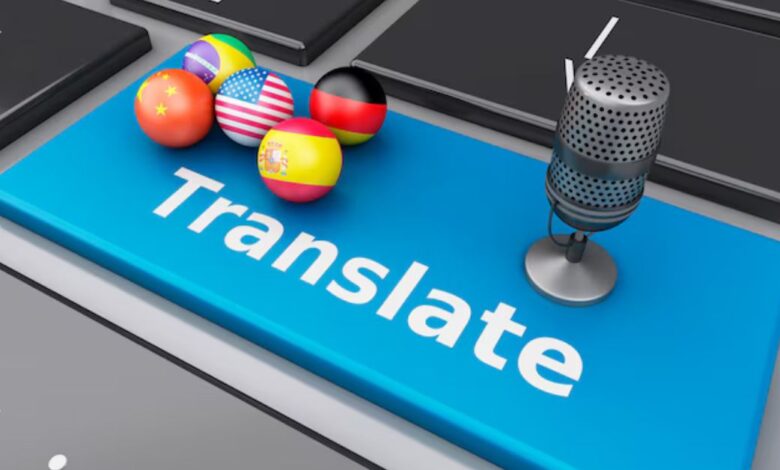Käätänäj: A Comprehensive Guide for Beginners

In the vast and diverse world of languages, Käätänäj stands out as a unique and intriguing linguistic phenomenon. Whether you’re a language learner, a translation enthusiast, or a content creator, understanding Käätänäj can open up new avenues for communication and creativity.
So, what exactly is Kää-tänäj? Simply put, Käätänäj is a constructed language (conlang) designed to explore linguistic concepts and push the boundaries of traditional language structures. Unlike natural languages that evolve organically over time, Kää-tänäj is an artificial language meticulously crafted with specific goals and principles in mind.
The significance of Kää-tänäj in the linguistic landscape lies in its ability to challenge our understanding of language and communication. It serves as a creative outlet for linguists and language enthusiasts, allowing them to experiment with syntax, grammar, and vocabulary in ways that natural languages might not permit. Additionally, the study of Käätänäj can provide valuable insights into the cognitive processes involved in language acquisition and use.
Understanding the Basics of Käätänäj: Key Principles and Features
Before diving into the practical aspects of using Käätänäj, it’s essential to grasp its fundamental principles and features. Here are some key points to consider:
1. Phonetics and Phonology
Käätänäj has a distinct phonetic inventory, which includes a range of consonant and vowel sounds. The language’s phonology governs how these sounds interact and form words. As a beginner, familiarizing yourself with the basic sounds and their combinations is crucial. Pay attention to the unique phonetic rules that Kää-tänäj employs, as they may differ significantly from those of natural languages.
Phonetic Inventory
The phonetic inventory of Käätänäj is designed to be both unique and versatile. It includes sounds that may not be found in many natural languages, providing a rich and varied palette for communication.
- Consonants: The consonant sounds in Käätänäj are categorized by their place and manner of articulation. They include stops, fricatives, nasals, and approximants. Some examples of Käätänäj consonants are /p/, /b/, /t/, /d/, /k/, /g/, /f/, /v/, /s/, /z/, /m/, /n/, /l/, and /r/.
- Vowels: The vowel system in Kää-tänäj is equally diverse, with front, central, and back vowels. Examples of Käätänäj vowels are /a/, /e/, /i/, /o/, and /u/. Diphthongs and long vowels are also common, adding to the language’s expressiveness.
Phonological Rules
The phonological rules in Käätänäj dictate how sounds can combine and interact. For instance, certain consonant clusters may be prohibited, or vowel harmony might be enforced, where vowels within a word must share certain features.
2. Grammar and Syntax
One of the most fascinating aspects of Käätänäj is its grammar and syntax. Unlike English, which follows a relatively fixed word order (Subject-Verb-Object), Kää-tänäj might employ more flexible sentence structures. Understanding the grammatical rules, such as verb conjugation, noun declension, and sentence formation, will help you construct meaningful sentences and express complex ideas.
Word Order
Käätänäj allows for a flexible word order, often depending on the emphasis or thematic structure of the sentence. While a default order might exist, variations are commonly used to highlight different parts of a sentence.
Verb Conjugation
Verbs in Kää-tänäj are conjugated according to tense, aspect, mood, and sometimes even person and number. This system allows speakers to convey subtle nuances in their actions.
- Tense: Käätänäj verbs can indicate past, present, and future actions.
- Aspect: Aspects such as perfective, imperfective, and progressive are marked on verbs.
- Mood: Indicative, subjunctive, and imperative moods are used to express statements, wishes, and commands, respectively.
Noun Declension
Nouns in Kää-tänäj are declined based on number (singular, plural), case (nominative, accusative, genitive, dative), and sometimes gender (masculine, feminine, neuter). These declensions help clarify the role of each noun in a sentence.
Sentence Formation
Sentences in Kää-tänäj can range from simple structures to complex, multi-clause constructions. Understanding how to form basic sentences is essential before tackling more advanced syntax.
3. Vocabulary
Käätänäj boasts a rich and diverse vocabulary, often created with specific cultural or thematic elements in mind. As a beginner, start by learning common words and phrases that you can use in everyday conversations. Over time, you can expand your vocabulary to include more specialized terms and expressions.
Core Vocabulary
The core vocabulary of Käätänäj includes everyday words and phrases that are essential for basic communication. These include greetings, common nouns (e.g., “house,” “water,” “food”), verbs (e.g., “eat,” “go,” “see”), adjectives (e.g., “big,” “small,” “beautiful”), and adverbs (e.g., “quickly,” “slowly”).
Specialized Vocabulary
As you become more proficient in Kää-tänäj, you can begin to learn specialized vocabulary related to specific fields or interests, such as technology, science, art, and literature.
Practical Tips for Beginners to Start Using Käätänäj Effectively
Now that you have a foundational understanding of Kää-tänäj, let’s explore some practical tips to help you start using the language effectively:
1. Immerse Yourself
Immerse yourself in Käätänäj by surrounding yourself with resources and materials related to the language. Listen to audio recordings, read texts, and watch videos in Kää-tänäj to familiarize yourself with its sounds and structures. The more exposure you have, the more comfortable you’ll become with the language.
Resources for Immersion
- Audio: Look for podcasts, songs, and audio books in Käätänäj. These will help you get used to the pronunciation and rhythm of the language.
- Reading Material: Start with simple texts, such as children’s books or short stories. As you advance, move on to more complex materials like novels and academic papers.
- Videos: Watching videos, including movies, TV shows, and instructional content, can provide context and visual aids to enhance your understanding.
2. Practice Regularly
Consistent practice is key to mastering any language, and Käätänäj is no exception. Set aside dedicated time each day to practice speaking, writing, and listening to Käätänäj. Use language learning apps, online forums, and language exchange partners to stay engaged and motivated.
Daily Practice Routine
- Speaking: Practice speaking Käätänäj with a language partner or record yourself speaking to improve your pronunciation and fluency.
- Writing: Keep a journal in Kää-tänäj, write short stories, or participate in online writing challenges.
- Listening: Spend time each day listening to Käätänäj, focusing on understanding the content without translating it into your native language.
3. Start Simple
Begin with simple phrases and sentences to build your confidence. Practice greetings, introductions, and basic conversations before moving on to more complex topics. Gradually increase the complexity of your sentences as you become more comfortable with the language’s grammar and syntax.
Basic Phrases to Get Started
- Greetings: Learn how to say “hello,” “goodbye,” “good morning,” “good night,” etc.
- Introductions: Practice phrases like “My name is…,” “I am from…,” and “Nice to meet you.”
- Common Questions: Master basic questions such as “How are you?,” “What is your name?,” and “Where are you from?”
4. Use Flashcards
Flashcards are a great tool for memorizing vocabulary and reinforcing key concepts. Create flashcards for essential words and phrases, and review them regularly to reinforce your memory. You can also use digital flashcard apps to make your learning experience more interactive and convenient.
Flashcard Tips
- Visuals: Include images on your flashcards to create visual associations with words.
- Examples: Write example sentences on the back of the flashcards to see how words are used in context.
- Categories: Organize your flashcards into categories (e.g., food, animals, colors) to help you learn related words together.
5. Join a Community
Joining a community of Käätänäj learners and enthusiasts can provide valuable support and encouragement. Participate in online forums, social media groups, and language meetups to connect with others who share your interest in Kää-tänäj. Engaging with a community can also expose you to different perspectives and learning strategies.
Community Engagement
- Forums: Join forums dedicated to conlangs or specifically to Käätänäj. Participate in discussions, ask questions, and share your learning experiences.
- Social Media: Follow pages and groups on platforms like Facebook, Instagram, and Twitter that focus on Kää-tänäj. Engage with posts, join conversations, and find language partners.
- Meetups: If possible, attend meetups or language exchange events in your area. Meeting fellow learners in person can provide additional motivation and practice opportunities.
Common Misconceptions and How to Avoid Them
As with any language, there are common misconceptions about Käätänäj that can hinder your learning progress. Here are a few to watch out for:
1. “Käätänäj Is Too Difficult”
While Käätänäj may seem challenging at first, remember that every language has its complexities. Break down your learning into manageable steps, and focus on gradual progress rather than perfection. With persistence and practice, you’ll find that Kää-tänäj becomes more approachable over time.
Overcoming Challenges
- Set Realistic Goals: Start with small, achievable goals. For example, aim to learn 10 new words a week or to hold a basic conversation.
- Celebrate Progress: Acknowledge your achievements, no matter how small. Celebrating progress can boost your motivation and keep you focused on your learning journey.
2. “You Need to Be a Linguist to Learn Käätänäj”
Käätänäj is designed to be accessible to language learners of all backgrounds. You don’t need a formal linguistic education to start learning Käätänäj. Approach it with curiosity and an open mind, and use available resources to guide your learning journey.
Accessibility for All Learners
- Beginner-Friendly Resources: Use resources that are specifically designed for beginners. These often include simplified explanations and exercises tailored to new learners.
- Ask for Help: Don’t hesitate to ask questions and seek help from more experienced speakers. Most language communities are welcoming and eager to assist newcomers.
3. “Käätänäj Is Not Practical”
While Käätänäj may not be as widely spoken as natural languages, it offers unique opportunities for creative expression and intellectual exploration. Embrace the language for its intrinsic value and the joy of learning something new. The skills and insights you gain from studying Kää-tänäj can also enhance your understanding of other languages and linguistic concepts.
Finding Practical Uses
- Creative Projects: Use Käätänäj in creative writing, poetry, or even for creating fictional worlds.
- Linguistic Exploration: Studying Kää-tänäj can deepen your understanding of linguistic principles and improve your overall language learning skills.
- Community Engagement: Engage with the Kää-tänäj community through collaborative projects, translations, and language challenges.
Advanced Concepts in Käätänäj
Once you’ve mastered the basics, you might want to explore more advanced aspects of Käätänäj. These include complex grammatical structures, idiomatic expressions, and cultural elements embedded in the language.
Complex Grammatical Structures
As you progress, you’ll encounter more sophisticated grammatical rules and structures. These can include compound sentences, subordinate clauses, and advanced verb tenses.
Compound Sentences
Compound sentences in Käätänäj are formed by connecting two or more independent clauses with conjunctions. Understanding how to properly use these conjunctions is key to mastering complex sentence formation.
Subordinate Clauses
Subordinate clauses add additional information to the main clause and are introduced by subordinating conjunctions. Learning to use subordinate clauses will allow you to express more detailed and nuanced ideas.
Idiomatic Expressions
Idiomatic expressions are phrases whose meanings are not directly derived from the literal meanings of the words. These expressions can add color and authenticity to your use of Kää-tänäj.
Examples of Idioms
- Break the ice: Equivalent expression in Käätänäj might mean initiating conversation in an uncomfortable situation.
- Bite the bullet: An idiomatic phrase used to describe facing a difficult situation with courage.
Cultural Elements
Understanding the cultural context in which Käätänäj was created can provide deeper insights into the language. This includes learning about the fictional history, traditions, and societal norms that influenced its development.
Cultural Context
- Fictional History: Many conlangs have a rich backstory that explains their origins and evolution. Exploring these narratives can enhance your appreciation of the language.
- Traditions and Norms: Learn about the customs, festivals, and societal norms of the culture that speaks Kää-tänäj. This knowledge can inform your use of the language and make your expressions more authentic.
Conclusion
Embarking on the journey of learning Käätänäj can be a rewarding and enriching experience. By understanding its key principles and features, practicing regularly, and staying engaged with the community, you’ll soon find yourself navigating the intricacies of this fascinating constructed language.
Remember, every step you take in learning Käätänäj brings you closer to unlocking its full potential. So, dive in with enthusiasm, embrace the challenges, and enjoy the process of discovering a new way of communicating. Happy learning!




